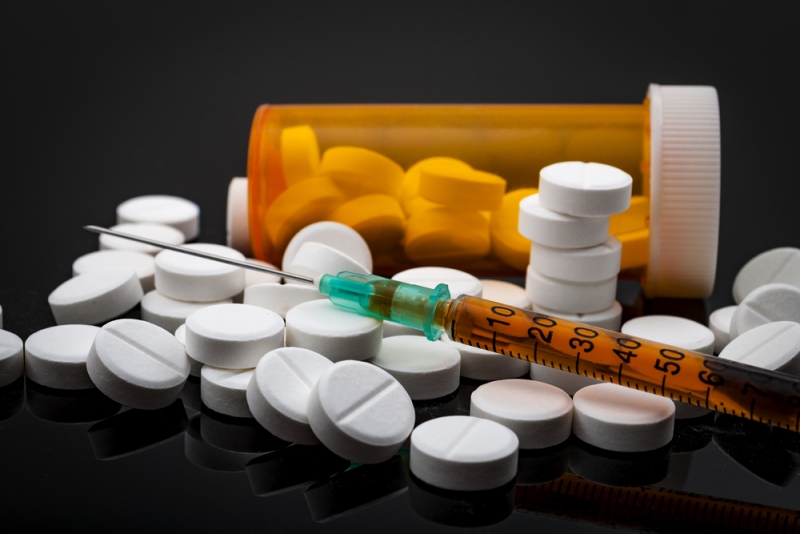<p style="text-align: justify;">Opiate dependence is a huge problem in the United States, and there are a variety of treatments for the addiction. Of course, like many other things, some treatments are more effective than others, and some even carry intrinsic risks.</p>
<p style="text-align: justify;">Of course, the risk of addiction is typically much greater than the risk of curing the addiction. However, treatment comes with side effects. And while some medication does help, without the surrounding behavioral treatments, they will not be effective at all. Here are five treatments for opiate dependence, their risks, and how they work.</p>
<h2 style="text-align: justify;"><strong>Rapid Opioid Detox (ROD)</strong></h2>
<p style="text-align: justify;">While these treatments are not popular, they are effective. The problem is, this treatment is risky. Anesthesia Assisted Detox is a form of Ultra Rapid Opioid Detox and is somewhat controversial. Essentially, the patient is put under anesthetic, and then given large doses of naloxone to flush the opioids out of their system. Complete flushing can happen in 4 to 8 hours, and patients experience withdrawal symptoms for about a week afterward rather than the weeks associated with 20+ day methadone tapers.</p>
<p style="text-align: justify;">The problem with this and other ROD programs is that in a certain number of patients, the rapid introduction of naloxone can cause a sudden release of catecholamines, and the release of these “fight or flight” hormones can cause cardiac arrest or arrhythmia. One study showed that as many as 8.6% of patients experience at least mild cardiac arrest or even death.</p>
<p style="text-align: justify;">As such, this treatment is not recommended except in extreme cases where no other treatments have been effective.</p>
<h2 style="text-align: justify;"><strong>Medication Assisted Treatments</strong></h2>
<p style="text-align: justify;">Most treatments, regardless of the type, include medication. These are called Medication Assisted Treatments, or MAT. The reasons for this are simple. Medication like Suboxone, can help with withdrawal and detox symptoms, some of which can be really severe, and most patience can get a Suboxone coupon by simply asking their doctor. Medication eases these and helps the patient deal with them on a more reasonable level than quitting “cold turkey.”</p>
<p style="text-align: justify;">The issue is a physical one too. As mentioned above, when a patient is detoxing, often the cravings they experience will trigger a “fight or flight” reaction that is hormonal. There is nothing the individual can do to control this reaction, and it can result in violent episodes, elevated heart rates, and other physical risks. The stronger the addiction, the greater the risks.</p>
<p style="text-align: justify;">Some medications can be used to prevent relapse as well, at least for a while, until the patient is at a point where they do not need that kind of assistance any longer.</p>
<p style="text-align: justify;">These drugs are typically combined with other treatments, such as behavioral treatments in a number of settings. The key thing to remember is that these are not just medication treatments, but medication assisted treatments. The medication is a part of the solution, but not a solution on its own.</p>
<h2 style="text-align: justify;"><strong>Behavioral Treatments</strong></h2>
<p style="text-align: justify;">As with any habit, one of the keys to beating opiate addiction is to alter one’s behavior. Old behaviors must be replaced with new ones. These behaviors need to become habits. The issue is that programs shorter than 90 days have huge relapse rates. In many cases it takes 60 days or more to develop a new habit.</p>
<p style="text-align: justify;">As such, this means that any treatment plan or combination of treatments needs to be part of a long term plan. Behavioral plans are very structured at first, and then move toward more freedom where the patient becomes accustomed to making their own choices with less and less support.</p>
<p style="text-align: justify;">One recent addition to this is virtual reality, which offers real world scenarios to addicts who can practice saying no, and ways to extract themselves from high-pressure situations. This is a great way to go beyond simple role-playing into a more sophisticated system.</p>
<h2 style="text-align: justify;"><strong>In-Patient Treatments</strong></h2>
<p style="text-align: justify;">This kind of treatment is conducted in a facility where the patient stays until they have kicked their addiction. The advantage to these environments is that there is less opportunity for temptation. The program is structured, safe, and controlled, keeping the patient safe from harm.</p>
<p style="text-align: justify;">Medical supervision also means that medications can be more regularly evaluated and changed if need be. This type of program is often where a patient starts their journey, moving to an outpatient style program once they have progressed to a certain level.</p>
<h2 style="text-align: justify;"><strong>Outpatient Treatments</strong></h2>
<p style="text-align: justify;">This option often comes after a period of inpatient treatments, but can happen right away, depending on the patient and the support system they have at home. The most important part of this kind of treatment is that it must mimic <a href="https://venture-lab.org">the structure of in-patient treatment.</a> The patient should be isolated, monitored, and evaluated regularly even if they are at home.</p>
<p style="text-align: justify;">The same is true if this treatment follows an in-patient period. A structure should be followed, and certain controls released slowly as the patient is ready for them. Contact with friends should be limited to those who are supportive of the process, and a strict environment should be maintained.</p>
<p style="text-align: justify;">Beating opiate addiction is a challenge even for the strongest and most determined of people. Help will be needed no matter what that support system looks like. There are many forms of these types of treatments, and overall plans can vary as much as there are individuals. No one plan is right for everyone.</p>
<p style="text-align: justify;">Support your loved one through their addiction and how to deal with it, and come up with a treatment plan that will work best for them in the long run.</p>
<p style="text-align: justify;">Was this article helpful and informative? Leave us a comment with your thoughts in the section below.</p>

5 Treatments For Opiate Dependence
